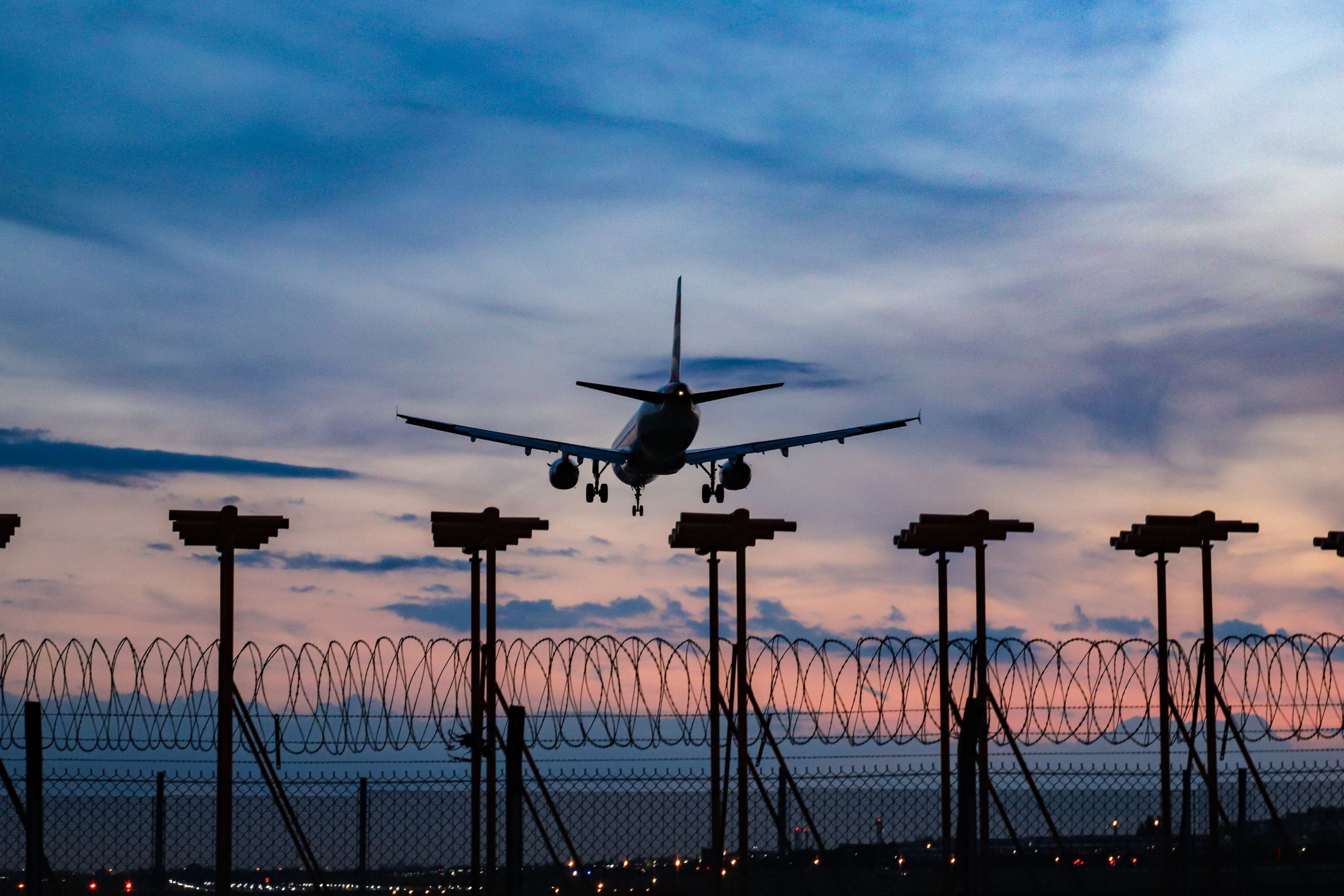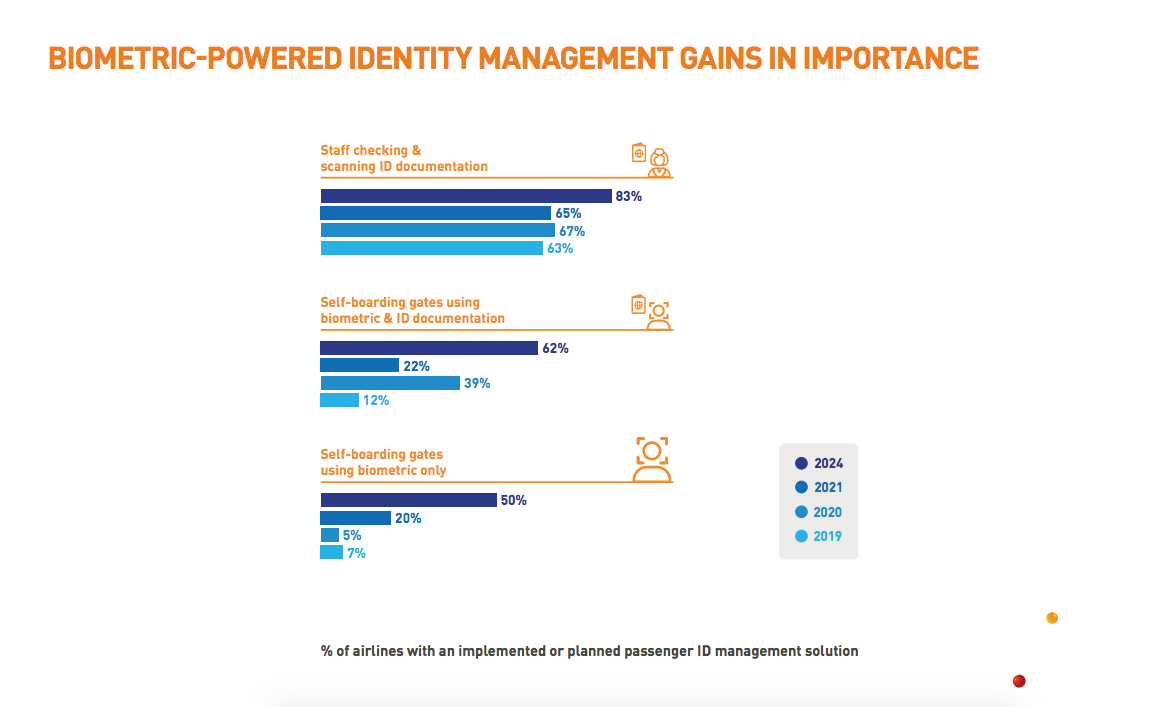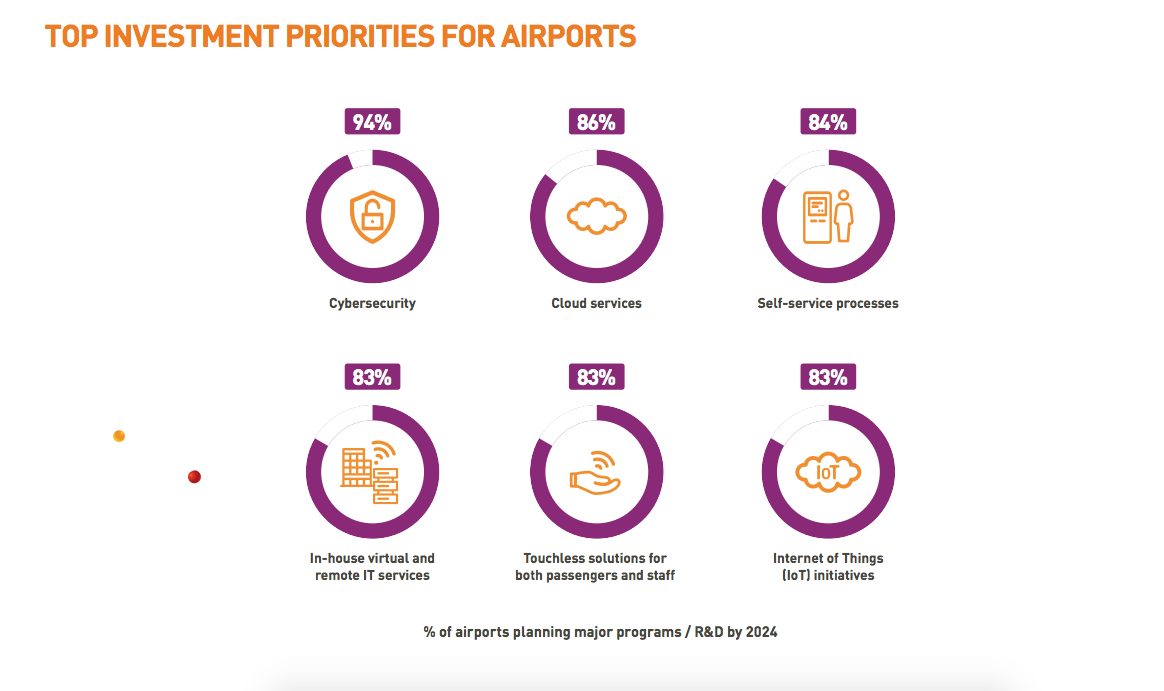Airline passengers and staff would have noticed several technological transitions across operations in the past few years. Still, more revolutions are on the way, with the airline IT industry eager to improve services across four key areas.SITA, the leading IT provider to the air transport market, identified the core departments to work on with its partners. While there has been headway within these fields, the firm feels there is plenty of room for development. The four areas are broken down by:
Digital identities
Self-boarding is still a major part of airline strategy regarding passenger identity management. 22% of carriers have introduced self-boarding gates using biometric and ID documentation, and this figure is expected to rise to 62% by 2024. Airlines and alliances alike are keen to boost the use of biometrics. Just this week, Star Alliance shared that it wants half of its members to use biometrics by 2025.
Security and safety at airports
81% of airports anticipate that their absolute IT spend will remain stable or grow this year compared to 2021. Amid the rising dependence on technology, digital services, and remote work trends, cybersecurity initiatives are at the top of the agenda for ground companies, with 94% of airports investing in technology in this field. There have been regular reports of bomb threats over the last few months, so we can expect security investment to increase in this next chapter.
Discover more aviation news here.
Advanced analytics and data management
Over the next three years, carriers plan to continue spending money on data management and business models through business intelligence software. Notably, 70% of airlines are investing in data exchange technologies, 82% in artificial intelligence, and 62% in Radio Frequency Identification (RFID) tracking. It's not just passenger data that carriers are looking to concentrate on. Data and AI will combine to help reduce airline fuel consumption and lower emissions, bringing us to the next focus area.
Sustainable alternative energy sources
SITA recently highlighted to Simple Flying how carriers are turning to technology to help counter rising fuel costs. This summer, IATA's Jet Fuel Price Index doubled since last year, causing airlines to utilize systems such as the eWAs pilot solution and Safety Line's OptiFlight to help reduce fuel consumption and limit aircraft carbon emissions at key flight stages.
Stay informed: Sign up for our daily and weekly aviation news digests.
SITA recognizes that there is still work to be done both in the air and on the ground. Thus, SITA recently looked at the potential for direct air carbon capture at popular spots such as London Luton and San Francisco International Airport.
With a clear path in this recovery period, SITA, announced the introduction of its Launchpad partnership program, with the goal of collaborating with key allies. With this initiative, the outfit is catalyzing its investment in new solutions that deliver smarter ways of deploying modern tech.
Overall, SITA is determined to align with aviation and non-aviation entities to drive innovation and experiment with new sustainable solutions. As SITA CEO David Lavorel explains:
"We are committed to enabling the growth of the air transport industry through smart technology and solutions. We have looked carefully at the market and identified key areas where we can have a significant impact and help our customers work smarter. We have a strong investment and innovation program to support these areas which are central to the growth of SITA. To accelerate this program, we are inviting new partners working in these four areas to join us so we can reshape the air travel industry together.
Providing IT solutions to more than 400 air transport industry members and 2,500 customers across the globe, SITA has built its presence to expand over 1,000 airports. Thus, we can expect a significant expansion in the utilization of new technologies to improve airline operations in the coming years.
What are your thoughts about these four focus areas? What do you make of the overall plans? Let us know what you think in the comment section.



